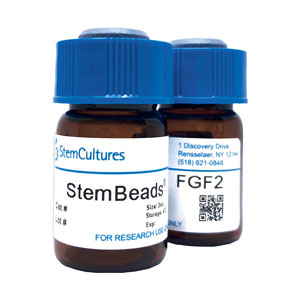 Stem cells are unique in that they, like humans, possess the ability to choose. “To be, or not to be,” is appropriate, as stem cells must decide if they want to maintain themselves as a stem cell, or turn into another cell type. Just like us, many factors influence this decision, and one of the major ones is the protein Even though iPS cell culture is a relatively new technology, there are already tons of protocols for culturing them—each with its own variations on the amounts of reagents to add to culture media, methods of passaging, ways of freezing down lines,2, also known as FGF2. FGF2 eliminates this decision for stem cells, by forcing them to maintain the stem cell state. In vivo, stem cells exist in a highly organized niche, where factors like FGF2 are maintained at constant levels to ensure stem cells are kept in the undifferentiated state.
Stem cells are unique in that they, like humans, possess the ability to choose. “To be, or not to be,” is appropriate, as stem cells must decide if they want to maintain themselves as a stem cell, or turn into another cell type. Just like us, many factors influence this decision, and one of the major ones is the protein Even though iPS cell culture is a relatively new technology, there are already tons of protocols for culturing them—each with its own variations on the amounts of reagents to add to culture media, methods of passaging, ways of freezing down lines,2, also known as FGF2. FGF2 eliminates this decision for stem cells, by forcing them to maintain the stem cell state. In vivo, stem cells exist in a highly organized niche, where factors like FGF2 are maintained at constant levels to ensure stem cells are kept in the undifferentiated state.
In stem cell culture, there is tremendous value for keeping stem cells in the undifferentiated state. The ability of stem cell to differentiate into multiple cell types is directly proportional to their level of “Stemness”. The more undifferentiated stem cells are, the more efficient they will be in generating progeny. In cell culture, scientists try to mimic the in vivo niche by adding soluble FGF2. When FGF2 is not present or withdrawn from cell culture strategies, stem cells now are able to “think” and start differentiating into other cell types. In some paradigms, researchers add fresh FGF2 every day, that means coming on Saturdays and Sundays to just maintain adequate FGF2 levels.
Recently, data from our lab showed that adding FGF2 every day might not be enough. When we looked at FGF2 levels in stem cell culture, after 10 hours in culture, no more FGF2 was left. When we graphed this over the course of one week, FGF2 levels looked like a roller coaster ride, starting high, going low, then spiking back up, before rapidly decaying again. This result was extremely interesting, and very important because it proved that the current standard stem cell culture techniques using FGF2 were far from optimal. In any given 24-hour period, where stem cells are without FGF2 for greater than half that time, they start to drift away from the stem cell state and begin the differentiation process.
To address this problem, our group came up with a way to keep FGF2 levels stable for at least 3 days in culture. When we did this, we found that stem cells were maintained better in the stem cell state, and eliminated some of that “drift” and spontaneous differentiation. This new product, StemBeads FGF2 allows for a savings of time, money savings from the use of fewer media changes, and most importantly, facilitates the growth of better cells.
So, while a lot of us enjoy the ups and downs of a roller coaster ride to get our adrenaline pumping, ups and down of FGF2 levels in standard stem cell culture techniques are far from optimal, and a paradigm shift may be in order.
If you enjoyed this post, please consider subscribing below to our monthly newsletter through which we provide stem cell scientists information on the most current research topics and tools to help them constantly improve their stem cell culture experience.
[widgets_on_pages]
To Successful Research,
StemCultures
Information for scientists by scientists on all things related to stem cell growth including stem cell culture, culture medium, tissue culture, fibroblast growth factor (fgf2) and more.
Note: StemCultures facilitates posting on this blog, but the views and accounts expressed herein are those of the author(s) or interviewee(s) and not the views or accounts of StemCultures its officers or directors whose views and accounts may or may not be similar or identical. StemCultures, its officers and directors do not express any opinion regarding any product or service by virtue of reference to such product or service in this blog.
